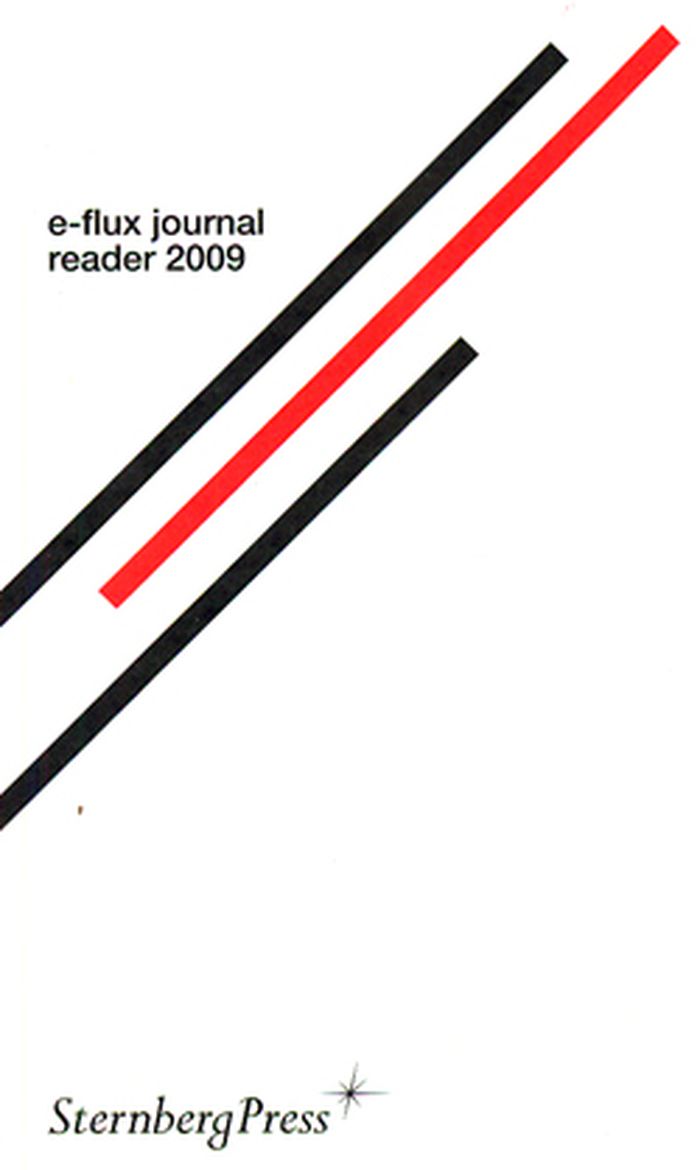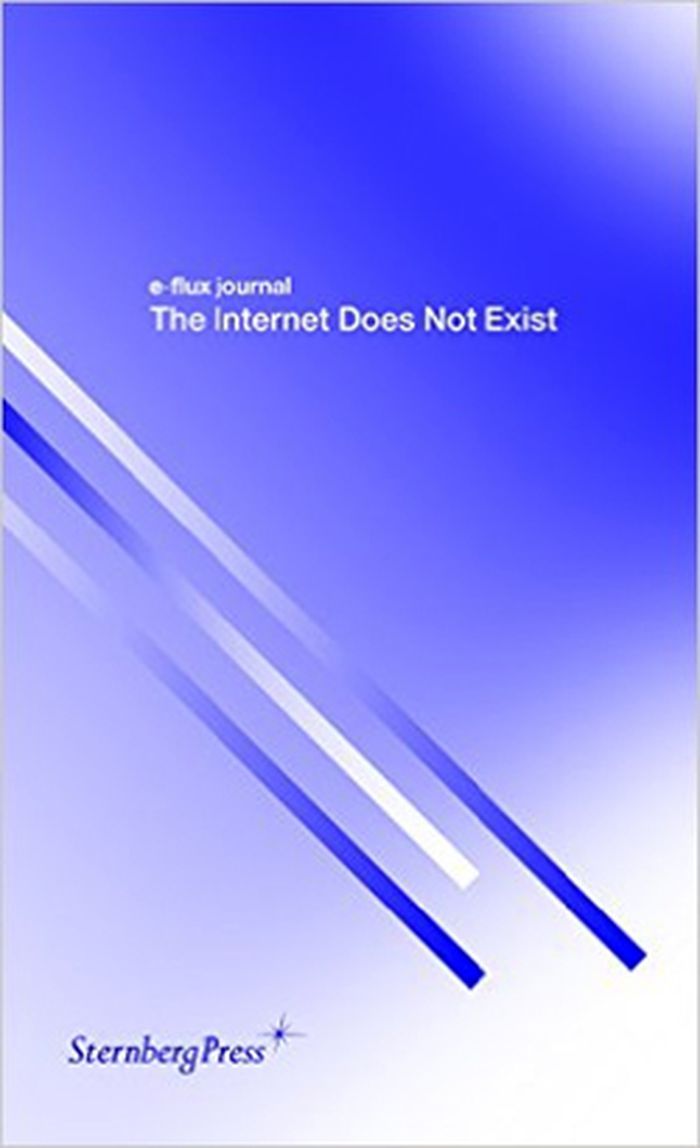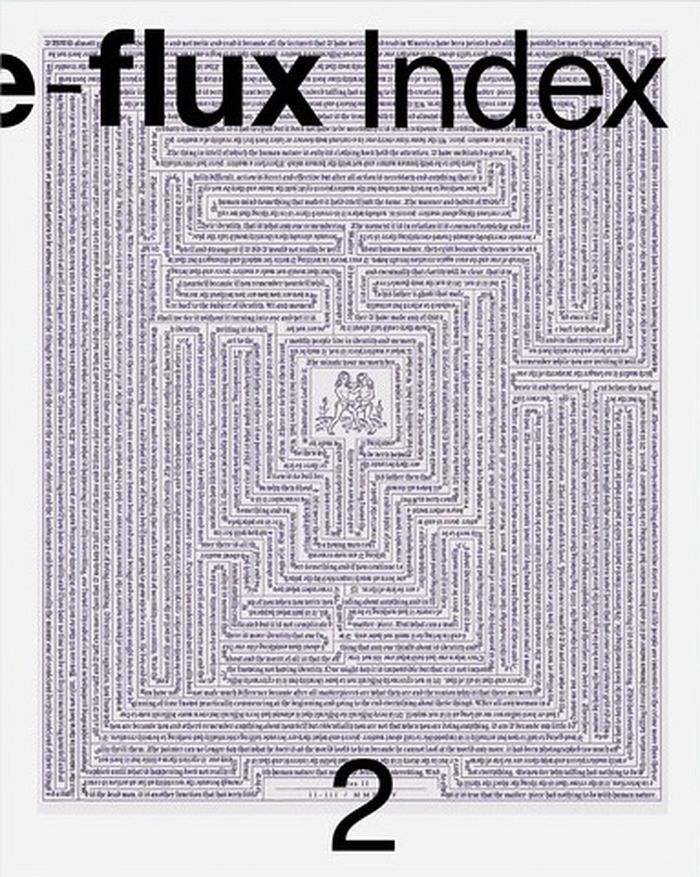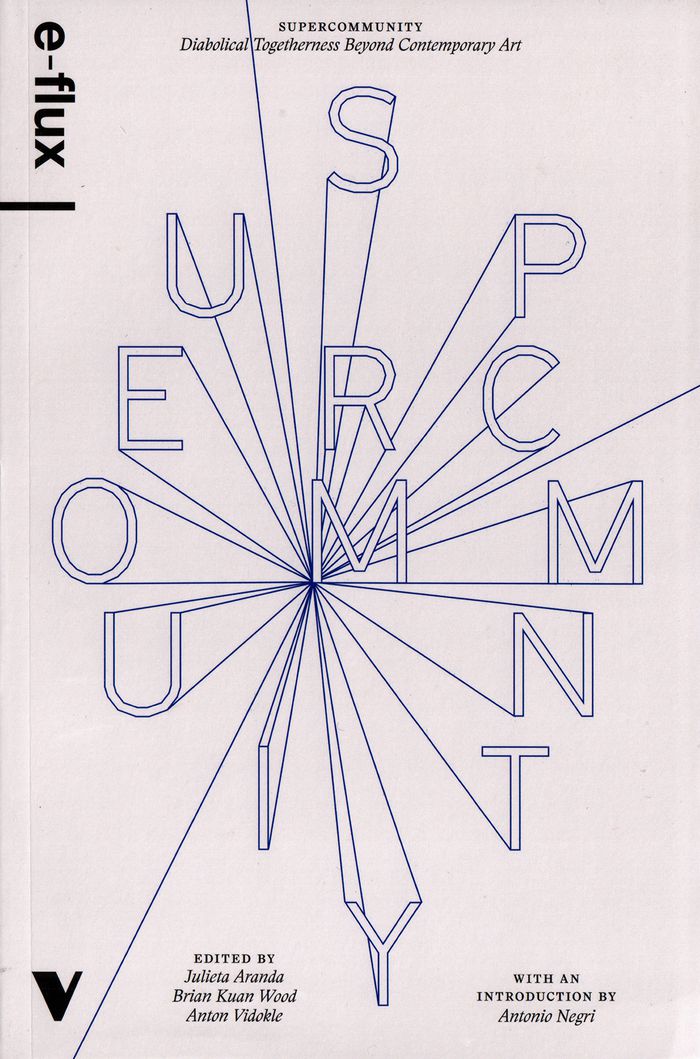e-flux journal : reader 2009
$18.95
(available to order)
Summary:
Since conceptualism, the field of art has become increasingly accustomed to playing host to its own critique, and recent decades have found institutions engaged in self-critique as if by mandate. Important notions of legibility, autonomy, and critical engagement that were once necessary to carve out a space for a critic or critical art publication have transposed(...)
e-flux journal : reader 2009
Actions:
Price:
$18.95
(available to order)
Summary:
Since conceptualism, the field of art has become increasingly accustomed to playing host to its own critique, and recent decades have found institutions engaged in self-critique as if by mandate. Important notions of legibility, autonomy, and critical engagement that were once necessary to carve out a space for a critic or critical art publication have transposed themselves onto artistic production proper, and are now considered to be of equal importance to artist, curator, institution, and engaged audience member alike. This climate of disciplinary reconfiguration and geographic dispersal has made the art world a highly complex place — the objective position that once defined the role of a critic has been effectively replaced by a need to understand just how large and varied the whole thing has become. The urgent task has now become to engage the new intellectual territories in a way that can revitalize the critical vocabulary of contemporary art. Perhaps the most productive way of doing this is through a fresh approach to the function of an art journal as something that situates the multitude of what is currently available, and makes that available back to the multitude. The selection of essays included in this book seeks to highlight an ongoing topical thread that ran throughout the first eight issues of e-flux journal — a sequence of overlapping concerns passed on from one contribution to the next.
Art Theory
$22.00
(available to order)
Summary:
The internet does not exist. Maybe it did exist only a short time ago, but now it only remains as a blur, a cloud, a friend, a deadline, a redirect, or a 404. If it ever existed, we couldn't see it. Because it has no shape. It has no face, just this name that describes everything and nothing at the same time. Yet we are still trying to climb onboard, to get inside, to be(...)
E-Flux journal: the internet does not exist
Actions:
Price:
$22.00
(available to order)
Summary:
The internet does not exist. Maybe it did exist only a short time ago, but now it only remains as a blur, a cloud, a friend, a deadline, a redirect, or a 404. If it ever existed, we couldn't see it. Because it has no shape. It has no face, just this name that describes everything and nothing at the same time. Yet we are still trying to climb onboard, to get inside, to be part of the network, to get in on the language game, to show up on searches, to appear to exist. But we will never get inside of something that isn t there. All this time we ve been bemoaning the death of any critical outside position, we should have taken a good look at information networks. Just try to get in. You can t. Networks are all edges, as Bruno Latour points out. We thought there were windows but actually they re mirrors. And in the meantime we are being faced with more and more not just information, but the world itself.
Critical Theory
e-flux Index #2
$65.00
(available in store)
Summary:
"It’s always too late, whenever you take a photograph." This laconic remark, which I heard during a recent artist’s talk in Berlin, bubbled up from a discussion upon the often-tragic indexicality or nonindexicality of contemporary photographic practice. JPEGs taken for wonders. Smoke plumes without embers. Footprints crossing the beaches of abandoned resorts. Hands that(...)
e-flux Index #2
Actions:
Price:
$65.00
(available in store)
Summary:
"It’s always too late, whenever you take a photograph." This laconic remark, which I heard during a recent artist’s talk in Berlin, bubbled up from a discussion upon the often-tragic indexicality or nonindexicality of contemporary photographic practice. JPEGs taken for wonders. Smoke plumes without embers. Footprints crossing the beaches of abandoned resorts. Hands that point at nothing in particular, and the gullible eyes that follow the lead of pointing index fingers. There is indeed something awkward to the snapshot’s belatedness. Its untimeliness. The ways in which, the second the shutter clicks—or that our thumb melds with the appropriate region of our phone’s liquid plasma displays and the resultant file is uploaded to a distant server—the instant we sought to "capture" has passed by and something else enters the frame. Someone blinks, the rubble dust envelopes the scene, the light changes, the hoodie we saw underground bearing the phrase "THEIR DESTINIES WOULD INTERTWINE" disappears behind an arriving subway’s blur, the wind cajoles a neighboring branch we hadn’t before noticed into the family portrait. Photography then remains, contrary to the terms in which it is sold to us by Silicon Valley manufacturers who stress its total immediacy as an instrument for perceiving the world, a stubbornly untimely pursuit. Can we not also say, "It’s always too late, whenever you start to index"?
Magazines
$39.95
(available to order)
Summary:
Invited to exhibit at the 56th Venice Biennale, e-flux journal produced a single issue over a four-month span, publishing an article a day both online and on site from Venice. In essays, poems, short stories, and plays, artists and theorists trace the negative collective that is the subject of contemporary life, in which art, the internet, and globalization have shed(...)
Supercommunity: diabolical togetherness beyond contemporary art
Actions:
Price:
$39.95
(available to order)
Summary:
Invited to exhibit at the 56th Venice Biennale, e-flux journal produced a single issue over a four-month span, publishing an article a day both online and on site from Venice. In essays, poems, short stories, and plays, artists and theorists trace the negative collective that is the subject of contemporary life, in which art, the internet, and globalization have shed their utopian guises but persist as naked power, in the face of apocalyptic ecological disaster and against the claims of the social commons.
Art Theory
$33.95
(available to order)
Summary:
''Come Closer: The Biennale Reader,'' published on the occasion of the inaugural Prague biennale, considers the present via counter-hegemonic readings of the past. The book explores various perspectives of class, race, and gender differences in post-socialist states, past and present. In societies today that can seem fragmented, alienated, and sealed-off, a feeling of(...)
Come closer: the Biennale reader
Actions:
Price:
$33.95
(available to order)
Summary:
''Come Closer: The Biennale Reader,'' published on the occasion of the inaugural Prague biennale, considers the present via counter-hegemonic readings of the past. The book explores various perspectives of class, race, and gender differences in post-socialist states, past and present. In societies today that can seem fragmented, alienated, and sealed-off, a feeling of "us" and "them" can potentially emerge. The reliance on a common language to bring people closer often does the opposite, leading to feelings of contempt, anxiety, and fear. By drawing attention to themes of intimacy, care, and empathy, the contributions in this book search for new types of communication that can bring people together. Like language, art can be used to mediate these differences, and to examine issues relating to how people coexist in society.
Art Theory




